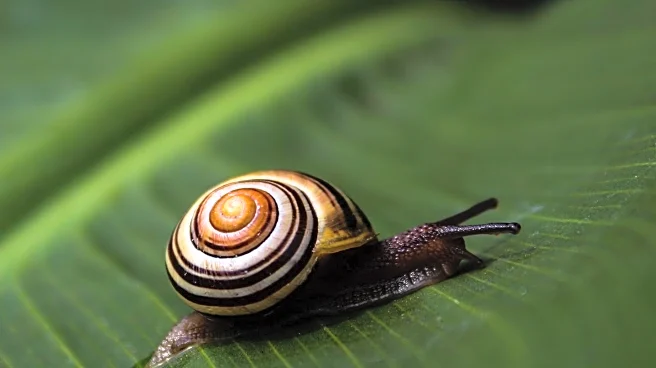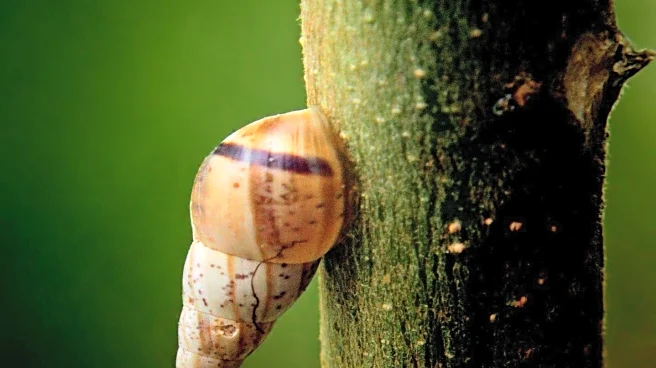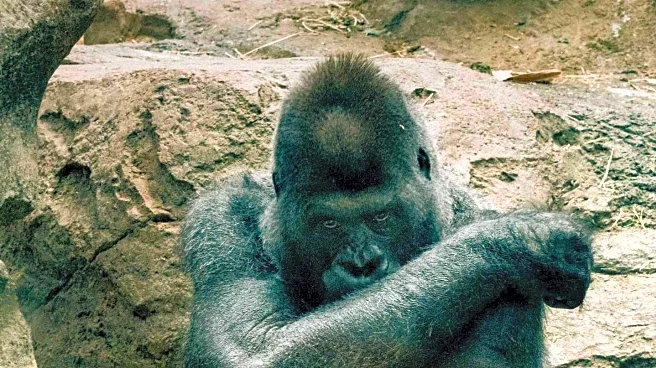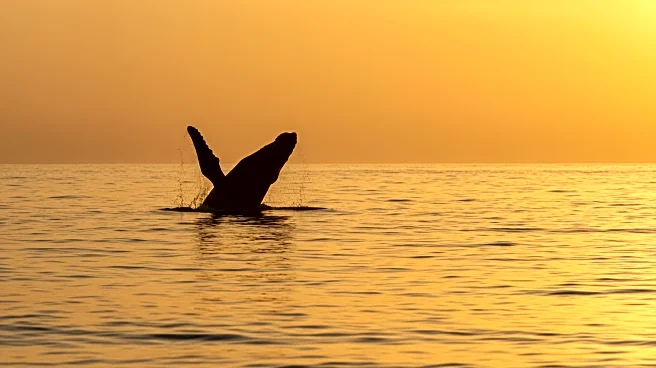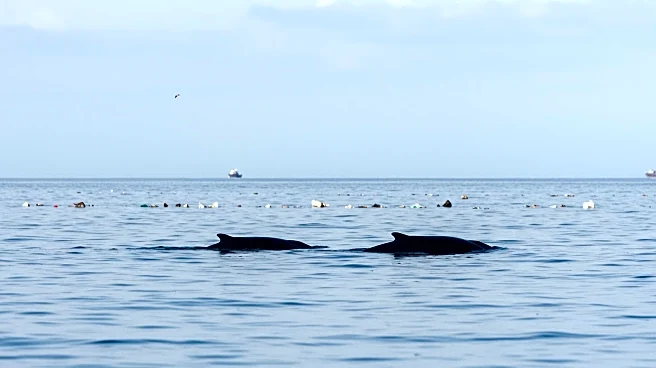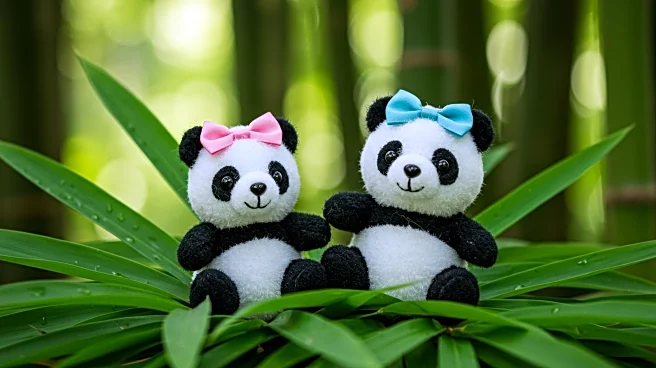What's Happening?
Scientists from Cuba and Britain have launched a collaborative effort to save six types of tree snails native to the forests of eastern Cuba. These snails, known for their vibrant and colorful shells, are being targeted by collectors and jewelry makers, leading to a significant decline in their population. The international shell trade, which often involves the illegal removal of these snails from Cuba, is a major threat to their survival. The partnership aims to protect these snails through breeding programs and genetic research. The snails' unique beauty, which attracts collectors, is ironically the same trait that endangers them, as highlighted by Angus Davison, a genetics professor at the University of Nottingham.
Why It's Important?
The Polymita snails are unique to eastern Cuba and their extinction would mean the loss of a species that scientists have yet to fully understand. The snails' bright colors present a scientific mystery that could provide insights into genetic patterns and aid other conservation efforts. Additionally, these snails hold cultural significance for local Cuban communities, representing a part of their natural heritage. The ongoing threat from collectors, combined with habitat destruction and climate change, underscores the urgent need for conservation measures. Protecting these snails is crucial not only for biodiversity but also for preserving cultural and scientific knowledge.
What's Next?
Efforts to protect the Polymita snails will likely involve increased enforcement of wildlife protection laws to prevent illegal trade. Conservationists may also focus on raising public awareness about the importance of these snails and the threats they face. Local and international support for conservation programs could play a vital role in ensuring the survival of these snails. Additionally, further research into their genetics may provide valuable information that could be applied to other conservation initiatives.
Beyond the Headlines
The plight of the Polymita snails highlights broader ethical and legal issues surrounding wildlife trade and conservation. It raises questions about the responsibility of collectors and consumers in contributing to species decline. The situation also emphasizes the need for sustainable practices and ethical sourcing in the jewelry and decorative industries. Long-term, this case could influence policies and public attitudes towards wildlife conservation and the protection of endangered species.
